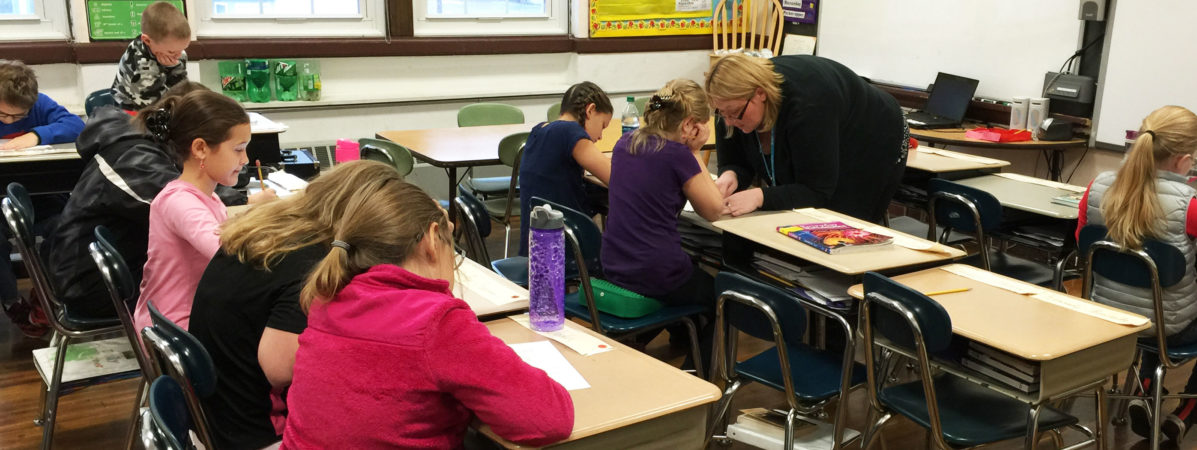
Asante Johnson is a technology integration coach and STEM teacher at District of Columbia Public Schools’ Wheatley Education Campus. Last month, Johnson joined a handful of educators from the League of Innovative Schools on a tour of three public school districts in New Hampshire, a leader in competency-based education.
When I landed in New Hampshire, I was eager to see competency-based education in action at the secondary level.
I wanted to see teachers guiding their students through individualized learning, units that are unique and cater to the multiple learning styles, and technology-rich classrooms that aided in the whole competency-based approach to learning.
Interestingly, what I saw were classrooms that on the surface looked quite traditional, with students working on the same lesson or exercise.
I walked in a 4th grade class and noticed that each student had an iPad. I leaned down to ask a student what he was working on and he excitedly explained to me that he was planning a party for his teacher using the website Partycity.com.
He showed me the detailed rubric he was given, which laid out the competencies he needed to master, as well as the Excel spreadsheet he was creating to map out his budget for the party.
With my interest piqued, I moved on to a girl sitting alone working on what looked like a diagram on her iPad. The student explained that she was mapping out the party for her teacher and was creating a planning document for the party that included costs, supplies, and the number of guests that would attend.
This was my first a-ha moment on the trip. Both students had the same rubric with the same competencies and standards to meet, but they were given the flexibility to show mastery of those competencies.
That’s what competency-based education is about – giving students a voice in how they show what they’ve learned. This is one thing the schools in New Hampshire appear to do well.
But one question left unanswered is how does competency-based education seamlessly mix or align in an environment where students are completing personalized lessons using a learning management system (LMS)?
At my school, Wheatley Education Campus, we are implementing competency-based learning this year using a teaching model that blends in-person instruction with online lessons delivered and tracked via Blackboard, our learning management system.
This hybrid approach is at the heart of everything we are doing at Wheatley, but I did not see any schools using this model during the New Hampshire tour. I asked a group of superintendents and school principals from New Hampshire about this during a round table discussion. They explained their goal was to perfect competency-based learning and grading first, and then begin blending learning. When I explained the work we are doing at Wheatley, everyone was surprised we decided to take on such a daunting task.
At the end of the trip, a group of middle and high school students from Pittsfield School District told us about special learning time they have once a week where students lead an entire course for their classmates.
Hearing this helped reinforce the competency-based model for me, because students had the option to explore any topic they wanted in order to meet competencies and standards designated by the state. This is an exciting concept, and one that I plan on implementing at Wheatley in the spring.
New Hampshire is definitely a state to watch as my team and I move forward in the implementation of a competency-based blended learning model. My hope is, one day, Wheatley Education Campus will host study tours for educators who want to learn how to successfully meet the needs of all learners.